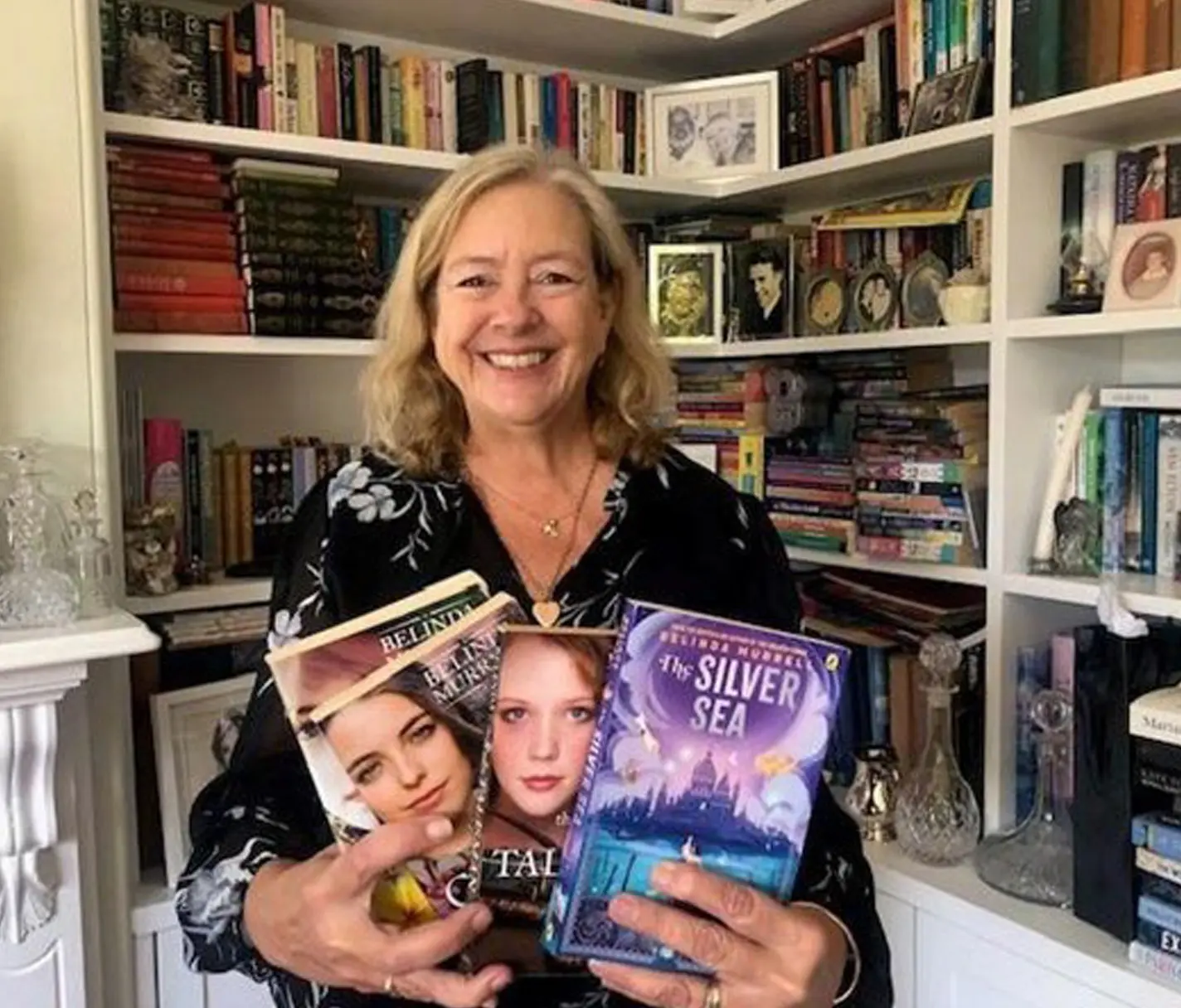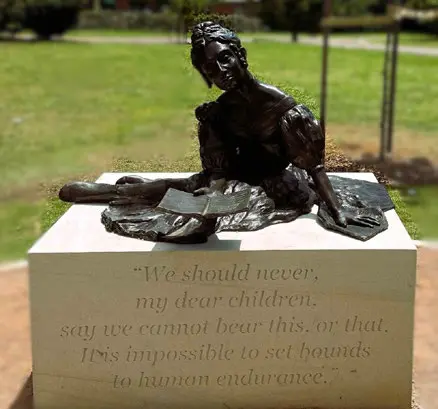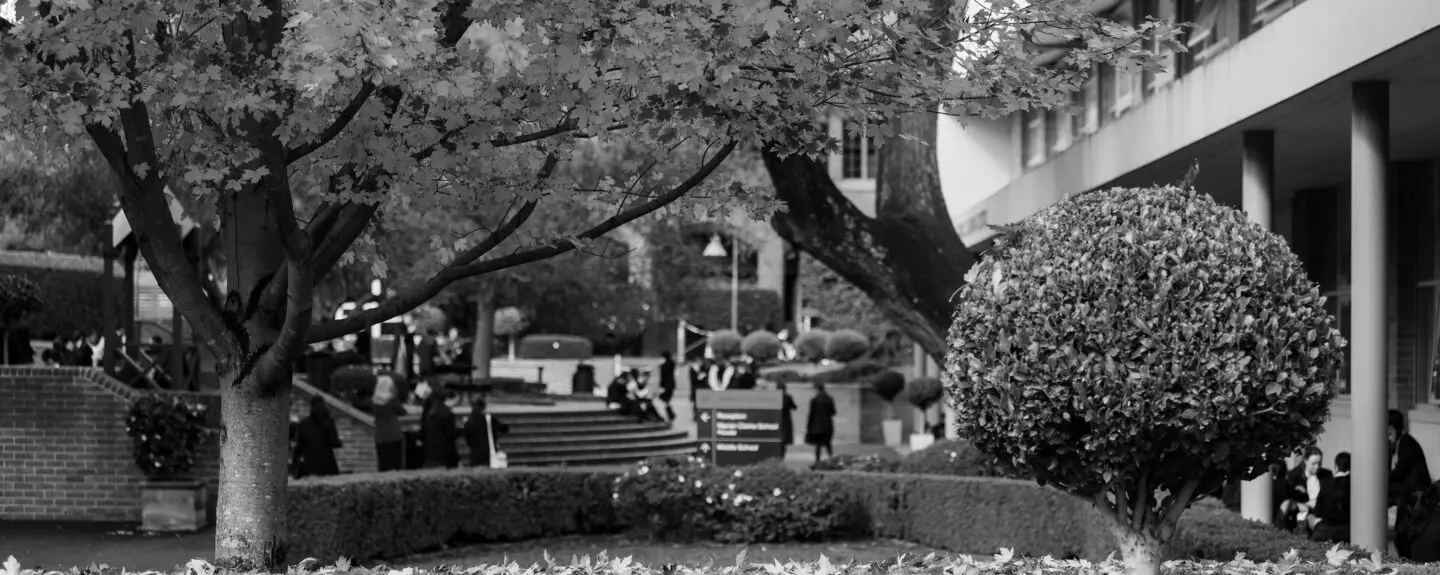
Meet Children’s author Belinda Murrell (1981, Humphrey)
Interview by Fiona Hobill Cole (Armstrong, 1981)
Belinda is an internationally published children’s author with a history of writing in her family that goes back 200 years. Her children’s fiction include The Golden Tower, The Sun Sword trilogy and her award-winning time-slip adventures, The Locket of Dreams, The Ruby Talisman, The Ivory Rose, The Forgotten Pearl, The River Charm, The Sequin Star, and The Lost Sapphire. Belinda has written three series for younger readers, The Daredevil Princess, Lulu Bell and Pippa’s Island books.
Belinda is married to Rob Murrell and they have three children and a dog. She is sister to Kate Forsyth (Humphrey, 1983), also an accomplished author of historical fiction for adults, who kindly spoke to the AOGU and school community at a ‘Meet the Author’ evening in 2022.
Please tell us a little about your life and career since your school days?
I have been working as a writer since I left university at the age of 20, working as a technical writer, freelance journalist, travel writer, public relations consultant, editor, writing teacher, and author. My first children’s book was published in 2006, and since then I have written over 40 books, ranging from picture books and junior fiction to historical novels and adult nonfiction. One of the joys of being a full-time writer is it has given me the flexibility to work from home, to be here for my three children as they grew up, as well as the opportunity to travel extensively around Australia and overseas. Last year I was the winner of the Society of Women Writers Di Yerbury Award, which was a three-month writing residency in the UK, which was an absolute highlight.
When did you first want to become a writer? Who first inspired you to start writing and what factors do you credit to you achieving this ambitious goal?
I began writing stories, poems and plays as a young child. My favourite subjects at school were always English and History and my teachers at Abbotsleigh encouraged my creative writing, particularly my Year 12 Extension English teacher, Miss Heath. She suggested that I start a daily creative writing journal and encouraged me to submit my work to be published in the school magazine. I can still remember the thrill of seeing my words printed in The Weaver. While I loved writing, I didn’t consider writing as a career, until Year 12, when my headmistress Kathleen McCredie called me into her office. I thought I must be in terrible trouble! However, she was concerned that I was planning to study Veterinary Science at university. She pointed out that I was topping Extension English and Extension Ancient History, but my marks in maths, chemistry and physics were less than brilliant. Miss McCredie told me that I was a beautiful writer and asked me if I had thought about studying Journalism or Communication instead of Vet Science. It was this encouragement that led to me enrolling at Macquarie University to study Journalism, Communication, English Literature and Creative Writing. So, I am eternally grateful to Miss McCredie for her wise advice!!
You come from a long line of female writers which you explore in your biography Searching for Charlotte. The Fascinating Story of Australia’s First Children’s Author, written with your sister Kate. What was the journey like researching and writing about your family history with your sister and how has it inspired you?
There have been many writers in my family over many generations and I have always been fascinated by this history. My great-great-great-great grandmother, Charlotte Atkinson wrote the first children’s book published in Australia in 1841, and was also a talented artist, botanist, a trailblazer in girls’ education and a pioneer in the fight for women’s legal rights. Her daughter Louisa Atkinson was the first Australian born female novelist and journalist. A few years ago, my sister Kate and I decided we would love to write a biography to learn more about Charlotte’s remarkable life. This started a two-year journey of intensive research in the archives of the Mitchell Library and National Library, reading hundreds of historical newspapers and diaries, and interviewing historians. A highlight was travelling to England for a month with our daughters to walk in Charlotte’s footsteps. It was challenging but so exciting to uncover the lost history of this amazing woman. Searching for Charlotte was published by the National Library of Australia and received an extraordinary response. As a result of the book, a community movement began to have Charlotte Atkinson publicly recognised with a bronze statue. Charlotte’s statue was erected in Berrima Park last year and unveiled by the Governor of New South Wales, the Honourable Margaret Beazley together with me and my sister Kate.
Education and empowerment of women and girls emerges as a theme in many of your books. Where did this focus first come from and how is it important to you?
My mother and grandmother were strong, clever women who valued education and were passionate about women having meaningful and interesting careers. They both grew up in an era where it was more difficult for women to achieve their dreams. My grandmother was a passionate teacher who kept her marriage secret so she could continue to work, at a time when married women couldn’t teach. My mother initially couldn’t afford to go to university, so she enrolled later as a mature aged student studying law and medical anthropology. I was brought up to value education and to always strive to achieve my best, an ethos which was encouraged during my school years at Abbotsleigh.
When my daughter Emily was younger, I realised that most of the books she read had male lead characters. Research also showed that in most children’s books, boys featured twice as much as girls, spoke twice as much as girls and had stronger, more important roles. I strongly believe that you cannot be what you cannot see, so I was determined to write books which had strong, clever female protagonists to inspire girls and provide them with aspirational role models.
How is the art of ‘storytelling’ important in today’s world where communication is often restrained to two second bites?
Storytelling is what connects us as humans. Stories teach us about our world, and our place in it. Most importantly, stories help us to develop empathy – to see the world through someone else’s eyes, to walk around for a while in their shoes and to truly understand other people’s experiences. Reading and sharing stories is the most important gift we can give our children, encouraging them to succeed academically, develop kindness, resilience and understanding.
Where do your imaginative and creative ideas come from? Can you describe your writing approach and processes?
I’m sure I have a very overactive imagination! My ideas come from all around me – from childhood experiences, memories, adventures with my own children, history, books, art, daily observations, conversations with children I meet, and perhaps most importantly from my travels. It can take me years from the first idea which sparks a story, until when the book is finally published.
My creative writing process starts with daydreaming and brainstorming ideas, jotting in my notebooks, imagining characters, setting and plot and gradually shaping a story over many months. I am a strong planner, so I sign a contract with my publisher at Penguin, based on a detailed synopsis for a novel or a series. Once I have the go ahead from my publisher, I begin to draft the manuscript on my computer, which can take me many months. Once the manuscript is finished, I then spend several months editing and polishing, working with my publisher, editor and proofreader to get the story as perfect as we can make it.
How do you cope with editing your novels and working with different publishers?
I have been very lucky to work with the same publisher at Penguin Random House for nearly 20 years, which is incredibly rare. I trust her implicitly, so if she feels something isn’t working or when she suggests an improvement, I always listen to her and rework the writing. I tend to write too long, so much of my editing process is about cutting back words and making the writing stronger and tighter. It is also a challenge writing for different age ranges so it is very important to pitch the language, vocabulary, themes and structure appropriately.
You travel to schools all over Australia teaching children to love writing and reading, and are an Author Ambassador for Room to Read and Books in Homes, can you tell us about this role?
I am absolutely passionate about promoting children’s literacy. I spend several months each year, travelling to schools all over Australia, talking to literally thousands of students about books and writing. This storytelling is such a valuable way to build excitement about literacy, encouraging kids to love reading and to try new books. For many years I have been an Author Ambassador for Room To Read, an international charity raising money to increase literacy programs in developing countries, particularly for girls, to break the cycle of poverty. I am an Author Ambassador for Books In Homes, a charity which provides fun books for disadvantaged Australian children, and also work closely with the Children’s Book Council of Australia, organising events to inspire kids’ reading.
What have you learnt about your beloved readers as your career has evolved?
One of my greatest joys is meeting readers who love my books or receiving letters and messages from fans. After writing books for so long, I now get letters from young women who are about 18 or 19 years old, who write to tell me how much my books meant to them as they were growing up and ‘how the adult they have become’ was influenced by the books they loved and the ideas and values they absorbed from their childhood reading. These letters are so inspiring to receive.
Can you share a fond memory you have of your school days at Abbotsleigh?
I have lovely, fun memories of lunchtimes, sitting in the gardens in the sunshine, chatting and laughing with my friends.
How has your time at Abbotsleigh and the education you received there helped you?
I feel very lucky to have had an outstanding education at Abbotsleigh. Our teachers encouraged us to aim high academically, to think critically, and to be creative.
What advice would you give Abbotsleigh students who are thinking of becoming a writer like yourself?
Read lots of books because all good writers were good readers first. Practice! Write every day to hone your craft. Be determined. Building a career as a writer is all about passion, persistence and patience.



